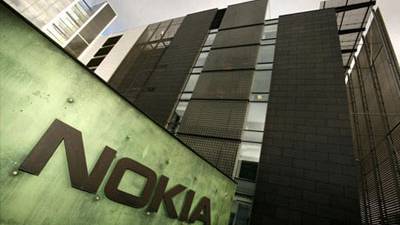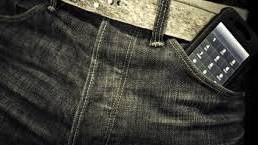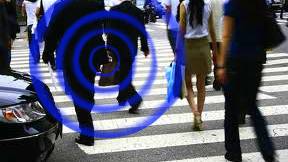Prototype Nokia phone recharges without wires
Prototype Nokia phone recharges without wires.By Christopher Null | www.YahooTech.ca
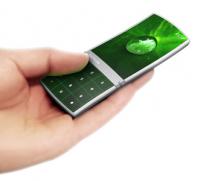 Pardon the cliche, but it's one of the holiest of Holy Grails of technology: Wireless power. And while early lab experiments have been able to "beam" electricity a few feet to power a light bulb, the day when our laptops and cell phones can charge without having to plug them in to a wall socket still seems decades in the future.
Pardon the cliche, but it's one of the holiest of Holy Grails of technology: Wireless power. And while early lab experiments have been able to "beam" electricity a few feet to power a light bulb, the day when our laptops and cell phones can charge without having to plug them in to a wall socket still seems decades in the future.Nokia, however, has taken another baby step in that direction with the invention of a cell phone that recharges itself using a unique system: It harvests ambient radio waves from the air, and turns that energy into usable power. Enough, at least, to keep a cell phone from running out of juice.
While "traditional" (if there is such a thing) wireless power systems are specifically designed with a transmitter and receiver in mind, Nokia's system isn't finicky about where it gets its wireless waves. TV, radio, other mobile phone systems -- all of this stuff just bounces around the air and most of it is wasted, absorbed into the environment or scattered into the ether. Nokia picks up all the bits and pieces of these waves and uses the collected electromagnetic energy to create electrical current, then uses that to recharge the phone's battery. A huge range of frequencies can be utilized by the system (there's no other way, really, as the energy in any given wave is infinitesimal). It's the same idea that Tesla was exploring 100 years ago, just on a tiny scale.
Mind you, harvesting ambient electromagnetic energy is never going to offer enough electricity to power your whole house or office, but it just might be enough to keep a cell phone alive and kicking. Currently Nokia is able to harvest all of 5 milliwatts from the air; the goal is to increase that to 20 milliwatts in the short term and 50 milliwatts down the line. That wouldn't be enough to keep the phone alive during an active call, but would be enough to slowly recharge the cell phone battery while it's in standby mode, theoretically offering infinite power -- provided you're not stuck deep underground where radio waves can't penetrate.
Nokia says it hopes to commercialize the technology in three to five years.
Article from: YahooTech.ca
Nokia developing phone that recharges itself without mains electricity.
By Duncan Graham-Rowe | www.Guardian.co.uk
Standby mode is often accused of being the scourge of the planet, insidiously draining resources while offering little benefit other than a small red light and extra convenience for couch potatos. But now Nokia reckons a mobile phone that is always left in standby mode could be just what the environment needs.
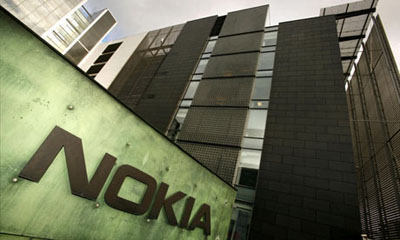
Nokia's Research centre in Helsinki. Photograph: Antti Aimo-Koivisto/AFP/Getty Images
A new prototype charging system from the company is able to power itself on nothing more than ambient radiowaves – the weak TV, radio and mobile phone signals that permanently surround us. The power harvested is small but it is almost enough to power a mobile in standby mode indefinitely without ever needing to plug it into the mains, according to Markku Rouvala, one of the researchers who developed the device at the Nokia Research Centre in Cambridge, UK.
This may sound too good to be true but Oyster cards used by London commuters perform a similar trick, powering themselves from radiowaves emitted by the reader devices as they are swiped. And similarly old crystal radio sets and more recently modern radio frequency identification (RFID) tags, increasingly used in shipping and as antitheft devices, are powered purely by radiowaves.
The difference with Nokia's prototype is that instead of harvesting tiny amounts of power (a few microwatts) from dedicated transmitters, Nokia claims it is able to scavenge relatively large amounts of power — around a thousand times as much — from signals coming from miles away. Individually the energy available in each of these signals is miniscule. But by harvesting radiowaves across a wide range of frequencies it all adds up, said Rouvala.
Such wireless transfer of energy was first demonstrated by Nikola Tesla in 1893, who was so taken with the idea he attempted to build an intercontinental transmission tower to send power wirelessly across the Atlantic. Nokia's device is somewhat less ambitious and is made possible thanks to a wide-band antenna and two very simple circuits. The antenna and the receiver circuit are designed to pick up a wide range of frequencies — from 500 megahertz to 10 gigahertz — and convert the electromagnetic waves into an electrical current, while the second circuit is designed to feed this current to the battery to recharge it.
The trick here is to ensure that these circuits use less power than is being received, said Rouvala. So far they have been able to harvest up to 5 milliwatts. Their short-term goal is to get in excess of 20 milliwatts, enough power to keep a phone in standby mode indefinitely without having to recharge it. But this would not be enough to actually use the phone to make or receive a call, he says. So ultimately the hope is to be able to get as much as 50 milliwatts which would be sufficient to slowly recharge the battery.
Steve Beeby, an expert in harvesting ambient energy at the University of Southampton, said it would be a remarkable achievement. . "Radio frequency power falls off exponentially with distance," he says. Earlier this year researchers at Intel and the University of Washington, in Seattle, showed that they could power a small sensor using a TV signal 4.1 kilometres away.
Wireless charging is not intended as a sole energy source, but rather to be used in conjunction with other energy harvesting technologies, such as handset casings embedded with solar cell materials. According to Technology Review magazine, the phone could be on the market in three to five years.
Article from: Guardian.co.uk
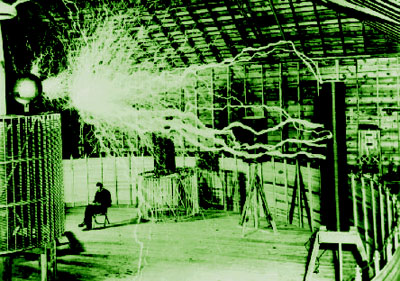
They tried to make the world forget his name - Nikola Tesla the greatest Inventor of all time
Video from: YouTube.com
University of Florida Develops Wireless Charging Station
Video from: YouTube.com
